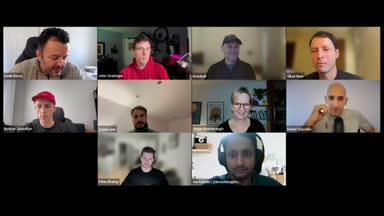How to Keep People Engaged on Zoom
 by
Gwyn Wansbrough
by
Gwyn Wansbrough
Gwyn Wansbrough will teach us how to transform our zoom sessions from exhausting to empowering. Gwyn teaches a much longer cohort course on this topic. And she has prepared instructors, leaders, and mentors how to run amazing zoom sessions. We will learn the importance of zoom exercises, engaging the chat, and breakout rooms as well as group discussions. This class is for anybody that wants to run a live zoom session or webinar in the future.
Recording

Thursday, November 30 2023
5:00 PM
on